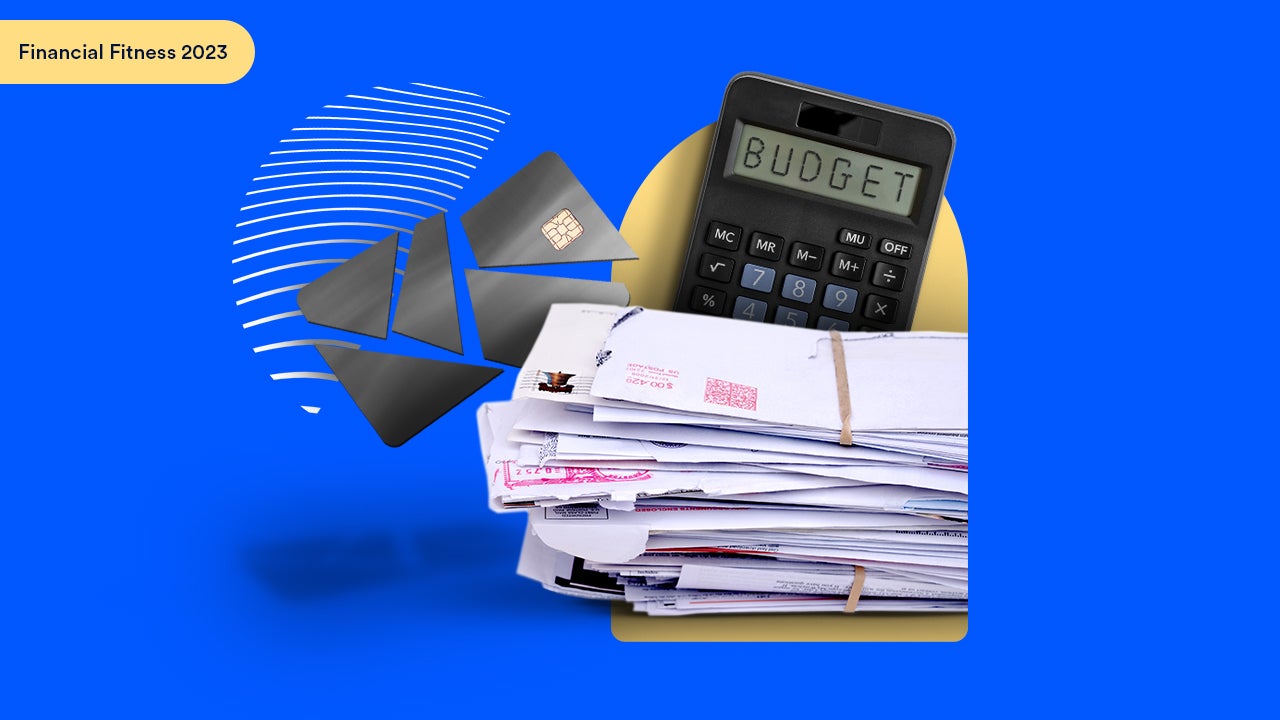Dissecting the fine print in your credit card agreement

Key takeaways
- Always check information in the Schumer Box.
- Know how much APRs will actually cost you.
- Keep track of card fees and other details in the fine print.
When applying for a credit card, you’re likely already familiar with the standard information: the annual fee, rewards rate, annual percentage rate (APR) and welcome offers.
While these are major factors when choosing a credit card, there are more questions to consider before finalizing your decision. Do you know what constitutes a penalty APR? Are there foreign transaction fees? How high will the variable APR get?
The good news is you can find answers to these questions in your credit card agreement.
How to read your credit card’s fine print using the Schumer Box
The Schumer Box, named after Sen. Chuck Schumer, is a standard feature across all banks. When looking at the home page of a credit card’s application page, there’s usually a link to rates and fees that takes you to either a pop-up or separate web page containing the Schumer Box. Information includes:
- APR
- APR for cash advances
- Card fees (annual, transaction, cash advance and penalty)
- Card FAQs
- Additional disclosures and terms and conditions
- Card information
- Legal notices
- Billing rights
Below is an example we created of what the Schumer Box looks like on an issuer’s application page, using a composite of information.
| Interest Rates & Interest Charges | |
| Annual Percentage Rate (APR) for Purchases and Transfers |
19.99%, 25.24% or 29.24%, based on your creditworthiness. This APR will vary with the market based on the Prime Rate. 0.00% introductory APR for 21 months from date of account opening. |
| APR for Cash Advances | 29.24%. This APR will vary with the market based on the Prime Rate. |
| Penalty APR | Up to 29.99%, based on your creditworthiness. This APR will vary with the market based on the Prime Rate. This APR may be applied to your account if you: (1) Make a late payment or (2) Make a payment that is returned. |
| Fees | |
| Annual fee | $0 |
|
Transaction fees Balance transfer Cash Advances Foreign Transactions |
Either $5 or 5% of the amount of each transfer, whichever is greater. Either $10 or 5% of the amount of each transaction, whichever is greater. 3% of the amount of each transaction in U.S. dollars. |
|
Penalty fees Late payment Returned Payment |
Up to $40 Up to $40 |
Interest rates and charges
The APR is applied to your outstanding balance at the end of each billing period if you’re not able to pay in full. For example, the current average credit card interest rate is 20.15 percent as of Jan. 8, 2025, according to Bankrate. This number is made up of the prime rate, currently at 8 percent, plus a card issuer profit margin usually between 12 and 15 percent. Information for cards with a 0 percent intro APR period, including details on how long they last, is also included in the Schumer Box.
Some cards come with a promotional intro APR for purchases, balance transfers or both. Look carefully at the terms and conditions with these offers. With some cards, you may only receive the intro 0% balance transfer APR on transactions you complete within 60 days of opening. Know when the card’s promotional period ends and have a plan to pay off your balance before the standard APR kicks in.
Sometimes you need a short-term cash advance, and credit cards are there as an option. However, if you use this option, you’ll face a fee and an interest rate that is higher than those for transfers and purchases. That rate usually has no grace period and kicks in immediately.
One of the most noteworthy figures on any credit card agreement is the penalty APR, which can exceed the high end of your card’s regular APR. Issuers often apply this rate to those who miss credit card payments.
Fees
You’ll also see the various fees associated with the card. These include:
- Annual fee: This tells you how much it costs just to carry the card for a year and under what circumstances the company waives that fee (for example, for the first year).
- Transaction fees: There are various fees associated with your card, including balance transfer fees, cash advance fees and foreign transaction fees. These are often expressed as “the greater of either $10 or 3 percent” or similar wording.
- Penalty fees: You’ll incur fees for late payments, exceeding your credit card’s limit (although usually such transactions are denied) and returned payments (for example, your check bounces or electronic transfer is rejected).
- Miscellaneous fees: Check this section for other fees that may apply. Will the issuer charge you fees for things like checking your balance, activating your account, insuring your account or receiving a bill? If so, you can likely find less costly options.
Checking for these fees and running the numbers will give you an idea of how much it will actually cost to hold any credit card you choose and allow you to adjust accordingly.
Payment allocation
The Credit CARD Act of 2009 included a provision — the payment allocation clause — that standardized how card issuers can handle credit card payments under the Consumer Financial Protection Bureau’s (CFPB) 12 CFR Part 1026 (Regulation Z). By law, payments that exceed the minimum have to be applied to the highest APR debt before any others.
As you pay off each debt category, the payment allocation clause continues. Your agreement will also contain information on accepted forms of payment, how your payment is processed, the application of your payments and more.
Additional fine print
Buried deep in a credit card’s home page is fine print, using a smaller font, that you ignore at your own peril. Cardholders need to review the tiny type before signing up for a new credit card, according to Stafford, Texas-based Money Management International, a nonprofit organization that provides services including debt relief and financial education programs. That fine print could include:
- Rewards terms and limits: These cards offer perks based on every dollar you spend. They include cash back, points or miles or an account credit, but check for things such as reward caps, fees and redemption restrictions.
- 0 percent interest terms: Who doesn’t like paying no interest? But it’s important to read the terms carefully and ask questions such as how long the 0 percent interest lasts and what the new rate is after the intro rate ends. If you’re not careful, you could be making payments with unexpectedly higher interest rates.
- Late payments: Life happens and sometimes you miss your monthly payment date. That slip used to cost an average of $32 for each infraction, according to Bankrate, but went as high as $41.
- Balance transfers: This low-interest offer can be a solid option if you’re trying to pay down card debt. Before hitting send to make the transfer, be sure to do the math on not only paying down the balance, but what you’ll pay once the offer ends. Don’t forget to check the balance transfer fee, which is usually between 3 and 5 percent. Depending on the old versus new interest rate, a balance transfer may cost you more.
- Card perks: Credit card issuers love to add extra perks to get you to sign on the dotted line. These include credits for Uber/Uber Eats, hotel stays, airline flights, Global Entry/TSA PreCheck application fees, digital entertainment and more. Check for expiration dates and fees that could be hidden as “discounts.”
Don’t forget to check on the terms to earn rewards. For example, you earn 3 percent unlimited cash back on grocery store purchases with the Capital One Savor Cash Rewards Credit Card. However, that 3 percent rate doesn’t apply to superstores such as Walmart and Target. But other cards, like the Wells Fargo Active Cash® Card, offer 2 percent unlimited cash back on all eligible purchases, including superstores.
You earn 3X points for “online grocery purchases” with the Chase Sapphire Preferred Card®, which means you’ll only earn 3X points if you place your order online directly with a grocery store, but not if you pay inside.
Money tip: In some cases, you can load your Sapphire Preferred card into your grocery store’s payment app, such as Kroger Pay, and use that digital app to pay in-store to earn 3X points.
Other places to read fine print for a credit card
When looking at a credit card application’s home page, you may see symbols including daggers (†), double daggers (††), asterisks (*) and squares (□) in small print, that signify further information. We’ve covered rates and fees, but offer and benefit terms get to the nitty gritty of what you get when it comes to credit card perks.
The offer terms outline the details of a welcome offer, what counts toward earning an offer and actions — such as having a history of canceling or downgrading cards in the first year of issuance — that could cause you to not receive points/miles, have them frozen or even clawed back.
Benefit terms offer details on items including credits, spending limits, earning points/miles in eligible categories, discount offers, entertainment, dining, pay with points, booking through travel portals, rewards programs and reward redemption.
The bottom line
If you pay your credit card balance in full each billing cycle, you can usually avoid interest charges on your purchases as well as most credit card fees. But even if you use your credit card responsibly, it’s a good idea to review the Schumer Box, credit card terms and conditions and, most importantly, the fine print in your agreement so you’ll be fully aware of its potential costs. Speaking of fine print, if you’re having trouble finding terms and conditions on credit cards, the CPFB has a database of hundreds of cards where you can find this information.
Your credit card agreement will also cover other necessary details: rewards structures, credit limits, authorized user information, disputed transactions and more. While these are all critical, the real added value of reading through your agreement will be found in knowing what to avoid and no paying fees if you can help it. With the right preparation and attention to detail, you’ll be ready for anything that comes your way.






